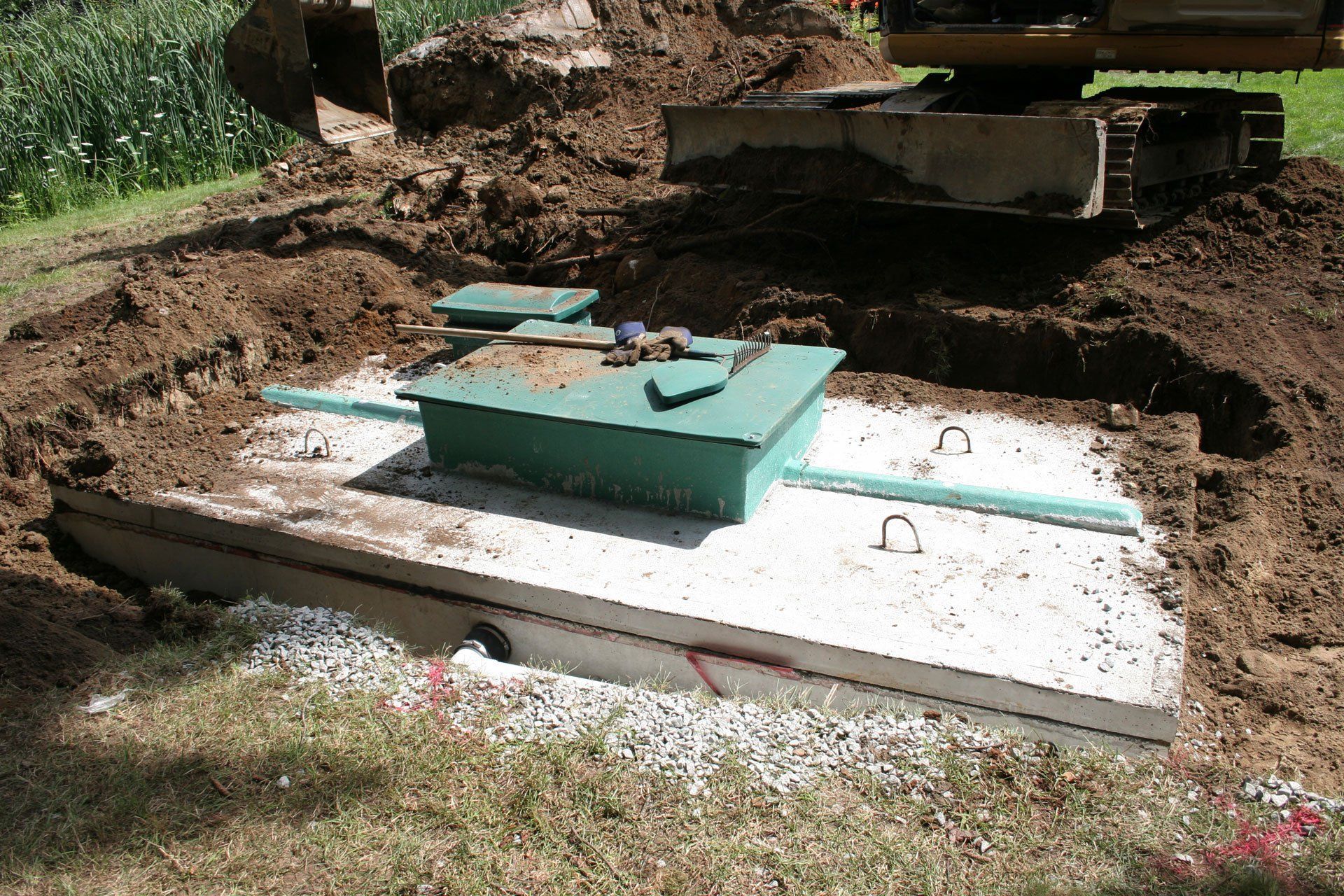
If you've owned a basic septic system before, that doesn't necessarily mean you'll know exactly what to do with every septic system you encounter. In fact, newer septic systems may have multi-chamber tanks, pumps, and other components that may require different or specialized care and maintenance.
Here are some septic components to check for (or have your septic contractor check for) so you can develop the best care and maintenance plan for the system.
1. Grease Trap
Not every septic system has a grease trap, but if yours does, you need to know about it. The trap will become filled with grease over time, meaning that you'll need to have it pumped on occasion.
Fortunately, occasional pumping is about the only maintenance this part needs. You can find out if you have a grease trap by looking at the as-built diagram of your septic system. Typically, grease traps are installed on systems where a lot of grease goes down the drain.
So if your system was ever used for a restaurant, for example, this could be why it has a trap. However, grease traps may also be installed if the homeowner does a lot of cooking and wants to keep excess grease out of the septic system.
2. Septic Pump
A pump chamber in your septic system, or a separate pump station with a septic pump, helps to distribute wastewater to the leach field portion of the system. These pumps are common if your drainfield is uphill of the tank or if you have a septic mound or pre-filter installed.
Septic pumps work similarly to basement sump pumps. Since they have moving parts, they'll need occasional maintenance. Be sure to have your septic contractor inspect the pump regularly so you can anticipate any repair and maintenance needs and stave off pump failure.
If you suspect you have a septic pump, check your as-built diagram or talk to your septic contractor about it. Do not attempt to open, look inside, or enter your septic tank to find the pump (or for any other reason).
3. Septic Pre-Filter or Sand Filter
A sand filter uses a special sand mixture to help filter out some contaminants before your wastewater is dispersed into the leach field. Some common reasons why you may need a sand filter include not having a large enough area of land for the normal size of leach field, and not having enough soil in the leach field to reliably remove all contaminants from the water.
The sand filter works similarly to a normal leach field, with lines running through the sand to disperse water so it can filter through. These filters can be above ground or below ground, so if you can't see it, look at the as-built diagram or ask a contractor to help you figure out if your system has one. Your septic contractor can also help you develop a plan and schedule for sand filter maintenance.
4. Septic Mound
If you have a septic mound, you may have shallow topsoil or some other reason why a more traditional septic leach field won't work. For instance, building codes typically say that your groundwater has to be a certain distance below the leach field. So if your groundwater is within just a few feet of the surface, you may need a septic mound.
Fortunately, these mounds are quite easy to find on your property. Just look for the giant raised area in your yard. If you have a septic mound, your system will typically include a pump as well because water will need to flow uphill in order to reach the mound.
As you can see, not every septic system is the same. Some systems are basic, one-chamber-tank, gravity-fed systems. Others use various moving parts, enabling them process effluent even when the situation isn't ideal (such as when the leach field is uphill of the tank).
For more information on how to care for any of these potential septic system components, talk to your septic contractor today. Consider
Upstate Septic Tank, LLC, for all your upstate septic needs. We can help with inspections, needed maintenance, and cleaning and pump-outs (for both septic tanks and grease traps).






